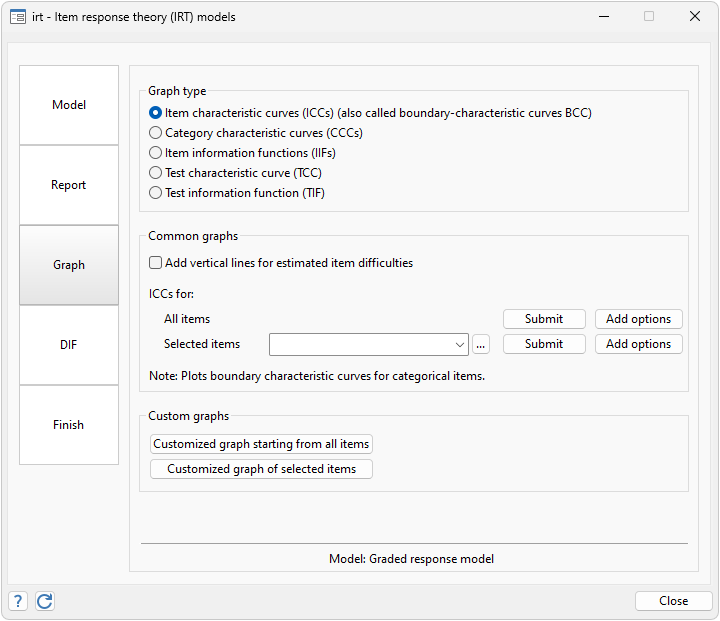
Learn about IRT (item response theory).
Binary response models
Ordinal response models
Categorical response model
Hybrid models with differing response types ![]()

Control how your output is displayed ![]()
Additional resources
See New in Stata 19 to learn about what was added in Stata 19.